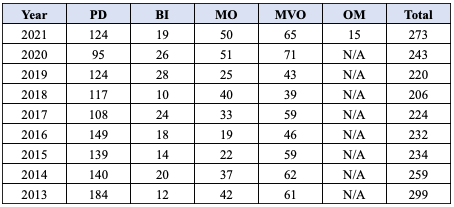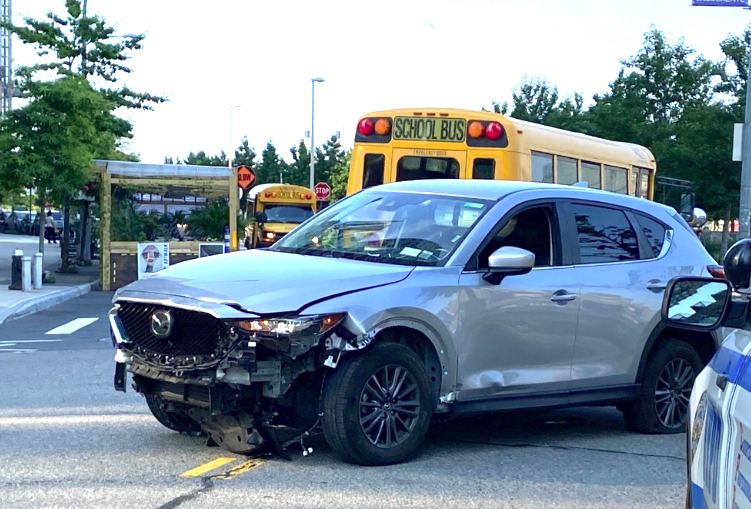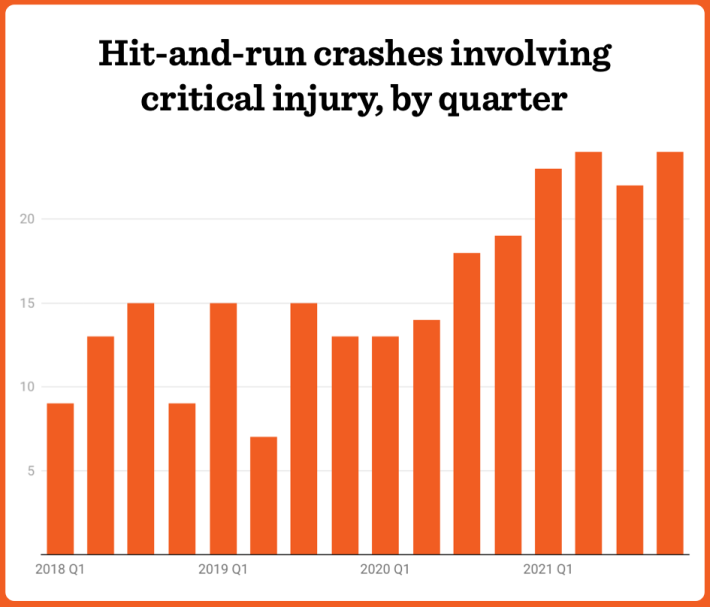It was worse than you thought.
A final crunch of the crash stats from 2021 reveals even more horrifying news for residents of the city, with the final year of the de Blasio administration not only being the most deadly for road users of the prior mayor's eight-year Vision Zero initiative, but particularly frightening due to increases in unsolved hit-and-runs.
In all, 273 people died on the roads in 2021, according to the Department of Transportation, up from 243 during the prior pandemic year and up from 220 in 2019.
The 273 deaths were 32 percent more than occurred in 2018, the safest year of Vision Zero.

A deeper analysis by Transportation Alternatives revealed these top lines:
- Hit-and-run crashes were way up last year, with 93 such crashes causing critical injuries. Only 3 percent of all hit-and-run crashes are solved, according to the NYPD's own numbers, as reported by Streetsblog.
- SUVs = death: The share of pedestrians being killed by behemoth assault cars is up 42 percent compared to de Blasio's first term, a continuing trend that Streetsblog has covered. SUVs represent a majority of cars in the city now.
- Brooklyn had at least 80 fatalities, the most of any borough and far above its Vision Zero-average of 61 per year.
- And, most alarmingly perhaps, the council district represented by the new chairwoman of the all-important Transportation Committee, Selvena Brooks-Powers has the most-dangerous roads in town. Eleven people were killed last year in her District 31.
“We cannot let another year go by with traffic violence killing a record number of New Yorkers,” Danny Harris, the executive director of Transportation Alternatives, said in a statement. “Our leaders must use every tool available to address this preventable public health crisis."
The street safety group used the numbers to reiterate its agenda for making New York streets safer, including its NYC 25X25 proposal to repurpose 25 percent of roadway space away from cars and car storage towards safer, sustainable forms of transportation.
Last week, Mayor Adams announced that the DOT would redesign 1,000 of the most-dangerous intersections in the city, and previously DOT Commissioner Ydanis Rodriguez said he would fortify 50 percent of the weakest "protected" bike lanes in the city — though neither initiative has begun yet.
"We are encouraged by Mayor Adams and Commissioner Rodriguez’s commitments to redesign intersections and upgrade protected bike lanes because Vision Zero at its core must focus on street design," Harris said. "All New Yorkers deserve safe streets. Nobody should fear death or injury as they move across our city.”
Nonetheless, the bloodshed continues. At least nine pedestrians have already been killed this year, including two in separate crashes in Manhattan on Monday. As a result, Transportation Alternatives is demanding Mayor Adams go further than his initial promises, calling for:
- Beefing up the city's use of the Vision Zero design checklist, which the DOT has been using as merely a list of suggestions rather than a mandate, TA says. The law requires the DOT to consider major road redesign elements whenever it undertakes a major improvement — but the agency has the option of eschewing the life-saving design elements as long as it says why.
- Install speed governors on all city-owned cars so they cannot exceed the speed limit. The city fleet is involved in thousands of crashes per year, mostly putting a sizable dent in the city's finances, as Streetsblog has reported.
- Dramatically scale up the Dangerous Vehicle Abatement Program, a de Blasio-era law that requires drivers to take a safety course if their cars are slapped with 15 or more camera-issued speeding tickets or five camera-issued red light tickets in one year. (So far, according to the DOT, 83 people have taken the course, a tiny percentage of drivers who have met the recklessness threshold.)
- Charge car owners a fee based on the weight of their car instead of the current practice of merely charging a flat rate per registered car ($30 biennial), an idea first proposed by the Independent Budget Office. State car registration fees are currently based on weight, though scale up minimally: the owner of a 2,000-pound car pays $16.25 per year while the owner of a 4,500-pound car pays $40.50 per year, a nominal fee for anyone who can afford a mega-car.
Transportation Committee Chairwoman Brooks-Powers declined to do a full-fledged interview about her agenda for her committee, but sent over the following statement:
“Every traffic death on the streets of New York is an avoidable tragedy,” she said. “Street safety has cascading effects on our communities’ health and economic well-being. I look forward to working with transportation stakeholders across the city to advocate for responsible street redesigns and make New York safer."







